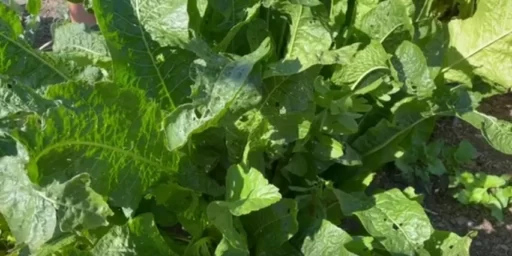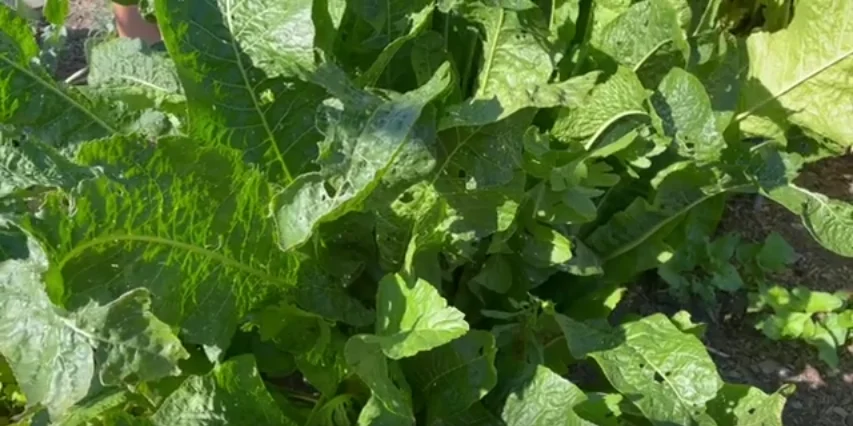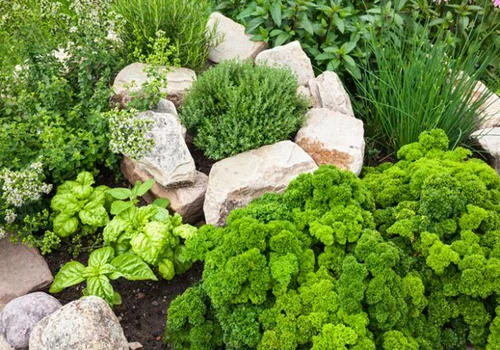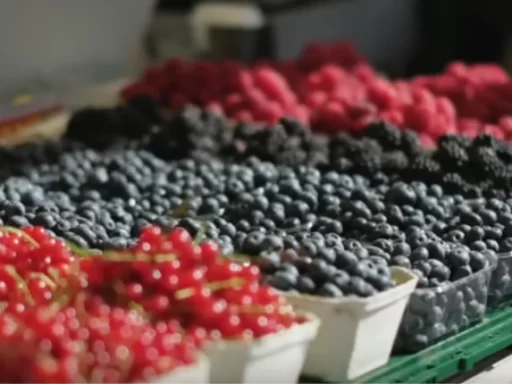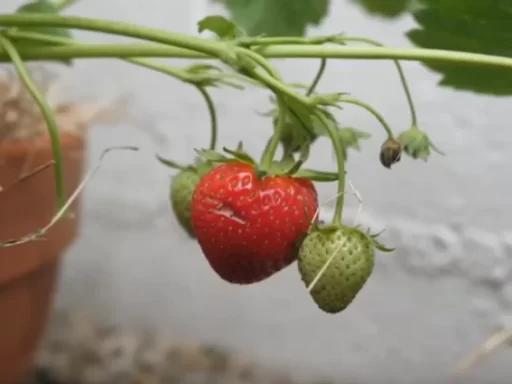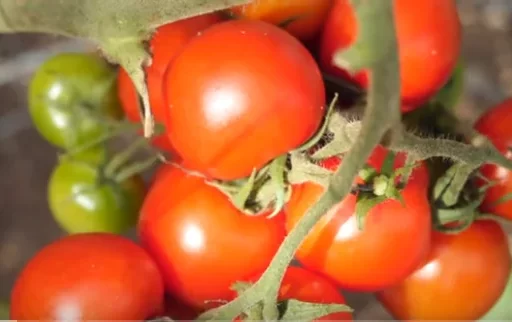Perennial vegetables offer a sustainable, low-maintenance way to enjoy fresh produce year after year. These plants regrow annually, minimizing the need for replanting, and many people aren’t even aware that these hardy plants are not only edible but also delicious. In this guide, we’ll explore some easy-to-grow perennials that will spice up your garden and your meals. Let’s dive into the fascinating world of edible perennials, how to plant them, and the benefits they bring to your home garden.
Ostrich Fern: A Unique Addition to Your Garden
The Ostrich Fern is a great plant to start with, providing both ornamental beauty and culinary value. This fern gets its name from the shape of its leaves, resembling ostrich feathers. What makes this plant even more appealing is that its young, tightly coiled leaves, known as fiddleheads, are edible and taste like a combination of asparagus and green beans. They are harvested in early spring and can be steamed, sautéed, or even pickled.
Growing Conditions
Ostrich ferns thrive in cool, shaded areas with moist soil, making them ideal for spots in your garden that receive limited sunlight. To plant them, dig a hole in rich, well-drained soil, ensuring the roots are moist. After planting, mulch with leaves or organic material to mimic the forest floor, where these plants naturally grow.
Maintenance
Ostrich ferns require little maintenance. Water them regularly to keep the soil moist, especially in dry periods. The fern will spread naturally over time, forming a lush green carpet in shaded areas. Keep in mind that fiddleheads should be harvested before the leaves fully unfurl, but be careful not to overharvest to ensure the plant remains healthy.
Perennial Brassicas: Daubentons Kale and Nine Star Broccoli
Perennial brassicas are a gardener’s dream, offering year-round greens with minimal care. Two of the most popular varieties are Daubentons Kale and Nine Star Broccoli.
Daubentons Kale
Daubentons Kale is a hardy, perennial green that can be propagated through cuttings, making it an excellent addition to any vegetable garden. The plant produces tender, leafy greens that can be harvested throughout the year, and it thrives in a variety of conditions, including partial shade.
Nine Star Broccoli
The Nine Star Broccoli is a perennial variety that produces both a central head and several smaller spears over the course of several weeks in the spring. After harvesting the main head, the plant will continue to produce side shoots, providing multiple harvests. This plant has a shorter lifespan of 3-5 years, but you can extend its productivity by regularly pruning it and preventing it from flowering.
Growing and Maintenance
These brassicas need a sunny location with rich, well-drained soil. If you can’t find cuttings, you can easily grow Nine Star Broccoli from seed. Plant in early spring and harvest in late summer. You can take cuttings from established plants to grow new ones, ensuring a continuous supply of these nutritious greens.
Horseradish: A Spicy Kick with Versatility
Horseradish is a perennial plant known for its spicy roots, used to make the famous horseradish sauce. However, what many people don’t know is that the young leaves of horseradish are also edible. They have a much milder flavor than the root and can be used in salads or steamed like other leafy greens.
Growing Horseradish
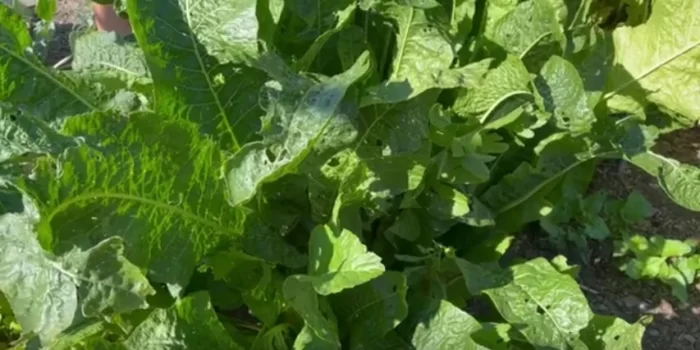
Horseradish is extremely resilient and grows well in most climates. It prefers full sun but can also tolerate partial shade. Planting horseradish in containers can help control its growth, as it tends to spread quickly in open soil. Make sure to plant the roots at a 45-degree angle, with the buds facing upwards, and give them enough space to grow. For best results, start your plants in pots before transferring them to your garden.
Maintenance Tips
Horseradish is a hardy perennial that requires little attention once established. However, it’s important to monitor its spread, as it can become invasive. If you’re planting in a container, ensure it’s large enough to accommodate the plant’s vigorous root system.
Wild Garlic: A Forager’s Delight
Wild Garlic, also known as Ramsons, is a highly fragrant and delicious plant that thrives in shaded, woodland-like areas. Every part of the plant is edible, from its bulbs to its flowers, but the leaves are most commonly used in cooking.
Growing Wild Garlic
This plant is easy to grow and prefers cool, shady spots. Plant the bulbs in moist, well-drained soil, about 2 inches deep and 4 inches apart. Wild garlic will naturalize over time, spreading throughout your garden.
Harvesting and Care
The best time to harvest wild garlic is in spring before the plant starts to flower. Use the leaves sparingly, leaving enough on the plant to allow it to regrow the following year. Wild garlic is relatively low maintenance, but it’s a good idea to mulch the area with leaves to mimic its natural woodland habitat.
Good King Henry: Spinach with a Twist
Good King Henry is a perennial plant that provides a spinach-like green throughout much of the growing season. It’s often called wild spinach because of its similarity in taste and texture. The plant also produces edible seed heads that can be used like quinoa.
Growing Conditions
Good King Henry prefers well-drained soil and partial shade. It can be tricky to germinate, so sow the seeds in a mix of soil and sand to improve drainage. The plant doesn’t like being transplanted, so it’s best to start it in small plugs and then carefully move it to the garden.
Care and Maintenance
Once established, Good King Henry requires little maintenance. Mulch the plant in late autumn to protect the roots during winter, especially in colder climates. You can begin harvesting the leaves in mid-spring and continue through autumn. The seed heads can be collected in late summer and used in a variety of recipes.
Sorrel: A Tangy Green for Year-Round Harvest
Sorrel is a perennial leafy green that offers a tangy, lemon-like flavor. It’s rich in vitamins, iron, and antioxidants, making it a healthy addition to your diet. There are several varieties, including broad-leaved sorrel, red-veined sorrel, and French sorrel, all of which are easy to grow and maintain.
Growing and Harvesting Sorrel
Sorrel grows best in full sun to partial shade, in well-drained soil. It has deep roots, allowing it to thrive in most soil types. Harvest the leaves regularly to encourage new growth, but avoid cutting the plant down completely. You can continue to harvest sorrel leaves from spring through autumn, and the plant will return year after year.
Chicory: Coffee Substitute and Leafy Green
Chicory is another perennial vegetable that offers both edible leaves and roots. The leaves can be used in salads or cooked, and the roots can be roasted and ground into a caffeine-free coffee substitute.
Growing Chicory
Chicory prefers sunny, sheltered areas and well-drained soil. It can be grown from seed in early spring or late summer. The taproots can be harvested from autumn through winter, and the leaves can be picked throughout the growing season.
Using Chicory
The leaves of chicory have a slightly bitter taste, making them perfect for balancing out the flavors in salads. The roasted roots, when ground, provide a coffee-like beverage that is free from caffeine, making it an excellent alternative for those looking to reduce their intake.
Frequently Asked Questions
- What are edible perennials? Edible perennials are plants that come back year after year and provide edible parts like leaves, roots, or flowers.
- What are the benefits of growing perennial vegetables? Perennial vegetables require less maintenance, reduce the need for replanting, and are often more resistant to pests and diseases.
- When is the best time to plant perennial vegetables? Most perennial vegetables should be planted in early spring or late summer, depending on the plant variety.
- Can perennial vegetables grow in shaded areas? Yes, many perennial vegetables, like wild garlic and ostrich fern, thrive in shaded areas with moist soil.
- Do perennial vegetables need to be replanted every year? No, perennial vegetables regrow each year from the same plant, reducing the need for replanting.
- How do I maintain perennial vegetables? Regular watering, mulching, and occasional pruning will keep perennial vegetables healthy and productive.
- Can perennial vegetables be grown in containers? Yes, many perennial vegetables can be grown in containers, which helps control their growth and prevents them from spreading uncontrollably.

